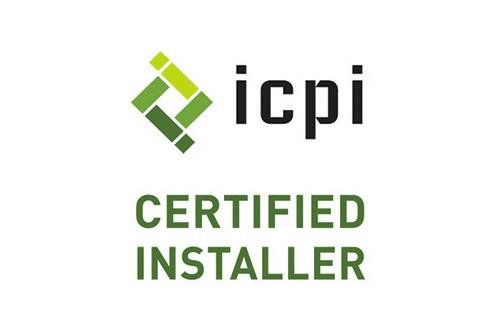Imagine transforming your outdoor space into a haven that not only looks stunning but also supports the environment. With the rise of eco-friendly designs and sustainable solutions, 2024 is set to bring homeowners, landscapers, and businesses exciting new opportunities in landscaping. This year promises a greater emphasis on sustainability, making it crucial for anyone looking to beautify their space while also being mindful of their environmental impact.
Kodiak Landscape & Designs, we’ll walk you through the top landscape trends for 2024, highlighting eco-friendly and sustainable solutions. From native plants to energy-efficient lighting, you’ll learn about the innovative approaches shaping the industry. We’ll also explore the benefits of eco-friendly landscaping, provide real-life case studies, and offer practical tips for implementing these trends in your outdoor space. By the end, you’ll have a clear understanding of how to make your garden not only a feast for the eyes but a boon for the planet as well.
The Rising Importance of Sustainable Landscaping
The past few years have seen a significant shift towards sustainability in various aspects of life, and landscaping is no exception. For homeowners and businesses alike, eco-friendly designs are no longer just a trend—they’re becoming a necessity. This shift is largely driven by growing awareness of climate change, resource scarcity, and the need for sustainable living.
Eco-friendly landscaping involves designing outdoor spaces in harmony with the environment. It means using materials and techniques that conserve resources, promote biodiversity, and reduce waste. In 2024, expect to see a greater emphasis on these principles as people strive to create beautiful landscapes that contribute positively to the environment.
Not only do eco-friendly landscapes benefit the planet, but they also offer a range of economic and health advantages. Lower maintenance costs, reduced water consumption, and improved air quality are just a few reasons why sustainable landscaping is gaining traction. Landscapers and homeowners can enjoy these benefits while contributing to a healthier, more sustainable world.
Top Landscape Trends for 2024
Native and Drought-Resistant Plants
One of the most significant trends for 2024 is the increased use of native and drought-resistant plants. These plants are naturally adapted to local climates, requiring less water and maintenance than non-native species. They’re an ideal choice for eco-friendly landscaping because they support local ecosystems and reduce the need for chemical fertilizers and pesticides.
Native plants also provide essential habitats for local wildlife, including pollinators like bees and butterflies. This added benefit helps maintain biodiversity and contributes to a thriving ecosystem. In 2024, expect to see more gardens showcasing native plants, offering stunning beauty while supporting the environment.
Additionally, drought-resistant plants are gaining popularity as water conservation becomes increasingly important. By incorporating these resilient species into your landscape, you can create a vibrant garden that withstands dry spells and reduces your water usage.
Sustainable Irrigation Systems
Water is a precious resource, and efficient irrigation systems are crucial for eco-friendly landscaping. In 2024, sustainable irrigation solutions are set to become more accessible and sophisticated. Drip irrigation, which delivers water directly to plant roots, is one such method that minimizes water waste while promoting healthy plant growth.
Smart irrigation controllers are another trend to watch. These devices use weather data and soil sensors to optimize watering schedules, ensuring your plants receive the right amount of moisture without overwatering. By integrating smart technology into your landscape, you can save water and reduce utility costs while maintaining a lush, healthy garden.
Rainwater harvesting systems are also gaining popularity as they capture and store rainwater for later use in irrigation. This sustainable practice reduces reliance on municipal water supplies and helps manage stormwater runoff, making it a valuable addition to any eco-friendly landscape.
Recycled and Upcycled Materials
Sustainable landscaping isn’t just about plants; it also involves using environmentally friendly materials. In 2024, expect to see a rise in the use of recycled and upcycled materials in landscape design. These materials not only reduce waste but often add unique character and charm to outdoor spaces.
Recycled concrete, for example, can be used for pathways and retaining walls, providing a sturdy and sustainable option for hardscaping. Similarly, reclaimed wood can be repurposed into beautiful garden furniture or decking, adding warmth and texture to your outdoor area.
Upcycling is another creative way to incorporate sustainability into your landscape. By giving new life to old items, you can create one-of-a-kind features that showcase your commitment to the environment. From repurposed metal sculptures to vintage planters, the possibilities are endless when it comes to upcycling in your garden.
Energy-Efficient Lighting
Lighting plays a crucial role in creating ambiance and safety in outdoor spaces, and energy-efficient options are on the rise. In 2024, more landscapers and homeowners will turn to LED lighting, which consumes significantly less energy than traditional incandescent bulbs. LEDs last longer, reduce electricity costs, and emit less heat, making them an eco-friendly choice for landscape lighting.
Solar-powered lights are another popular option for sustainable landscapes. These lights harness the sun’s energy during the day and illuminate your garden at night without increasing your energy bills. They’re perfect for pathways, patios, and other outdoor areas where electricity access may be limited.
Additionally, smart lighting systems are becoming more accessible, offering features like motion sensors and timers to further conserve energy. By incorporating energy-efficient lighting into your landscape, you can enhance your outdoor space’s beauty while minimizing your environmental impact.
The Benefits of Eco-Friendly Landscaping
Environmental Impact
Eco-friendly landscaping offers numerous environmental benefits, starting with water conservation. By using native and drought-resistant plants, installing efficient irrigation systems, and harvesting rainwater, you can significantly reduce your water consumption. This not only helps preserve precious resources but also lessens the strain on local water supplies.
Reducing your carbon footprint is another key advantage of sustainable landscaping. By using locally sourced and recycled materials, you can minimize the energy and emissions associated with transporting and producing new products. Additionally, native plants and trees absorb carbon dioxide, helping to mitigate climate change.
By adopting eco-friendly practices, landscapers and homeowners can create outdoor spaces that benefit both the environment and the community. These landscapes promote biodiversity, support local wildlife, and contribute to cleaner air and water.
Economic Advantages
Sustainable landscaping can also lead to significant economic savings. By choosing low-maintenance plants and using efficient irrigation systems, you can reduce the time and resources spent on maintaining your garden. This translates to lower utility bills and fewer expenses on fertilizers, pesticides, and other gardening materials.
Energy-efficient lighting and smart irrigation systems further contribute to cost savings by reducing electricity and water usage. Over time, these savings can offset the initial investment in sustainable landscaping, making it a financially sound choice.
For businesses and commercial spaces, eco-friendly landscapes can enhance property value and attract environmentally conscious customers. By showcasing your commitment to sustainability, you can differentiate your brand and build goodwill among clients and visitors.
Health and Well-Being
Beyond the environmental and economic benefits, eco-friendly landscaping also offers health and well-being advantages. Green spaces have been shown to improve mental health, reduce stress, and promote relaxation. By creating a serene and sustainable outdoor environment, you can foster a sense of tranquility and connection with nature.
Additionally, landscapes filled with native plants and trees contribute to cleaner air by filtering pollutants and absorbing carbon dioxide. This improves air quality and creates a healthier environment for you and your family.
By adopting eco-friendly landscaping practices, you can enhance your outdoor space’s beauty and functionality while promoting overall well-being for yourself and your community.
Case Studies and Success Stories
Kodiak Landscape & Designs
Kodiak Landscape & Designs is a pioneer in sustainable landscaping, showcasing the potential of eco-friendly practices through its innovative designs. The company has successfully transformed numerous residential and commercial spaces, incorporating native plants, efficient irrigation systems, and sustainable materials.
One notable project involved the redesign of a local park, where Kodiak Landscape & Designs replaced non-native plants with native species, installed solar-powered lighting, and used reclaimed materials for pathways and seating areas. The result was a vibrant, low-maintenance park that conserved resources and supported local wildlife.
By sharing their success stories, Kodiak Landscape & Designs inspires other landscapers and homeowners to adopt eco-friendly practices and create beautiful, sustainable outdoor spaces.
Homeowner Transformations
Many homeowners are also experiencing the benefits of sustainable landscaping. By incorporating native plants, efficient irrigation systems, and energy-efficient lighting, they’ve created stunning gardens that require less maintenance and consume fewer resources.
One homeowner transformed their suburban backyard into a native plant oasis, attracting pollinators and supporting local wildlife. By installing a rainwater harvesting system and using drip irrigation, they reduced their water consumption by 50%, saving on utility bills and contributing to environmental conservation.
These inspiring stories demonstrate the potential of eco-friendly landscaping to create beautiful, functional, and sustainable outdoor spaces that benefit both the environment and the community.
Practical Tips for Implementing Sustainable Landscaping
Selecting Plants and Materials
When planning your eco-friendly landscape, start by choosing plants native to your region. These plants are well-adapted to local conditions, requiring less water and maintenance than non-native species. Drought-resistant plants are also an excellent choice, helping you conserve water while maintaining a lush garden.
Consider using recycled and upcycled materials in your landscape design. Reclaimed wood, recycled concrete, and upcycled metal sculptures can add unique character to your outdoor space while reducing waste and conserving resources.
By carefully selecting plants and materials, you can create a beautiful, sustainable landscape that supports local ecosystems and reduces your environmental impact.
Sustainable Irrigation Practices
Efficient irrigation is crucial for sustainable landscaping. Drip irrigation systems deliver water directly to plant roots, minimizing waste and promoting healthy growth. Smart irrigation controllers use weather data and soil sensors to optimize watering schedules, ensuring your plants receive the right amount of moisture.
Rainwater harvesting systems are another sustainable option, capturing and storing rainwater for later use in irrigation. This practice reduces reliance on municipal water supplies and helps manage stormwater runoff.
By adopting sustainable irrigation practices, you can conserve water, reduce utility costs, and maintain a healthy, vibrant garden.
Integrating Eco-Friendly Technology
Incorporating eco-friendly technology into your landscape can further enhance its sustainability. Energy-efficient LED lighting and solar-powered lights reduce electricity usage and create a beautiful ambiance in your outdoor space.
Smart technology, such as motion sensors and timers, can help conserve energy and ensure your garden is well-lit only when needed. By integrating these eco-friendly solutions, you can create a sustainable, efficient, and visually appealing landscape.
The Future of Eco-Friendly Landscaping
Trends Beyond 2024
As sustainability continues to gain importance, new trends in eco-friendly landscaping are emerging. Vertical gardens and green roofs are becoming increasingly popular, offering innovative ways to incorporate greenery into urban environments and maximize limited space.
Edible landscapes, featuring fruit trees, vegetable gardens, and herbs, are also on the rise. These functional gardens provide fresh, homegrown produce while promoting biodiversity and resource conservation.
Looking beyond 2024, expect to see continued innovation in sustainable landscaping solutions, as landscapers and homeowners strive to create beautiful, eco-friendly outdoor spaces.
Technology and Innovation
Technology and innovation play a crucial role in the future of eco-friendly landscaping. From smart irrigation systems and energy-efficient lighting to advanced materials and design techniques, technological advancements are driving the development of sustainable landscaping solutions.
The integration of AI and machine learning can optimize landscape design and maintenance, ensuring resources are used efficiently and reducing environmental impact. By staying informed about the latest trends and innovations, you can create a future-proof, sustainable landscape that benefits both the environment and your enjoyment.









